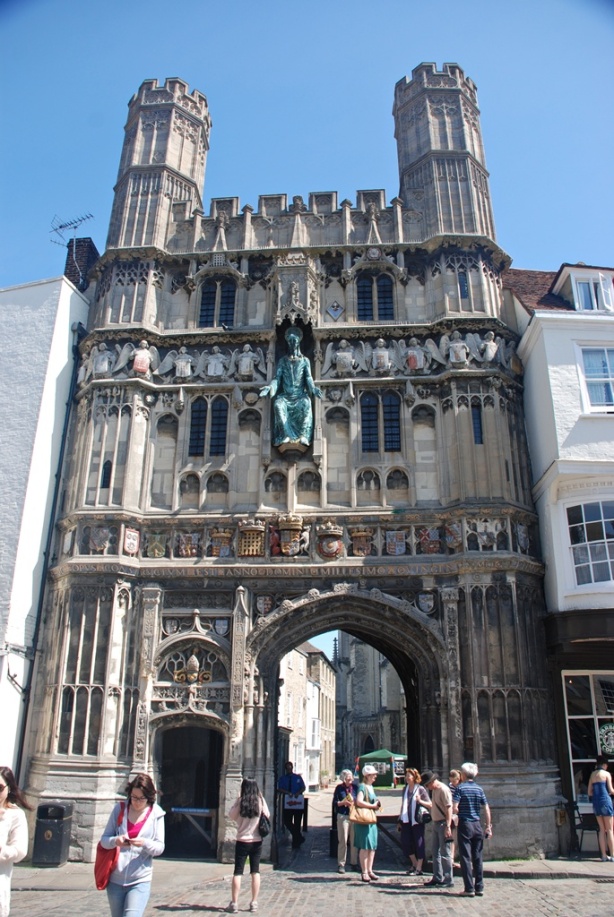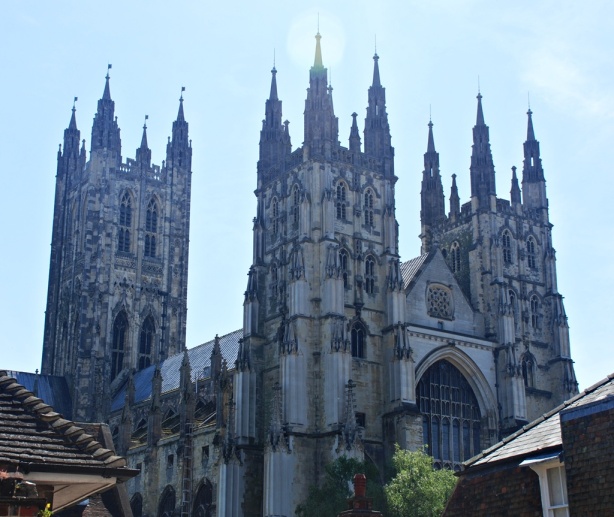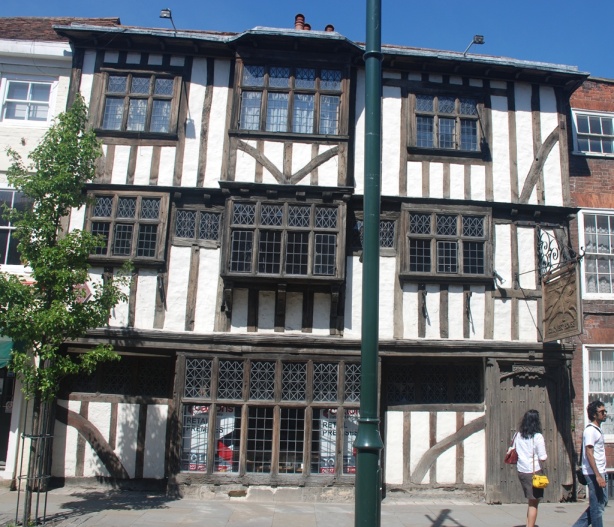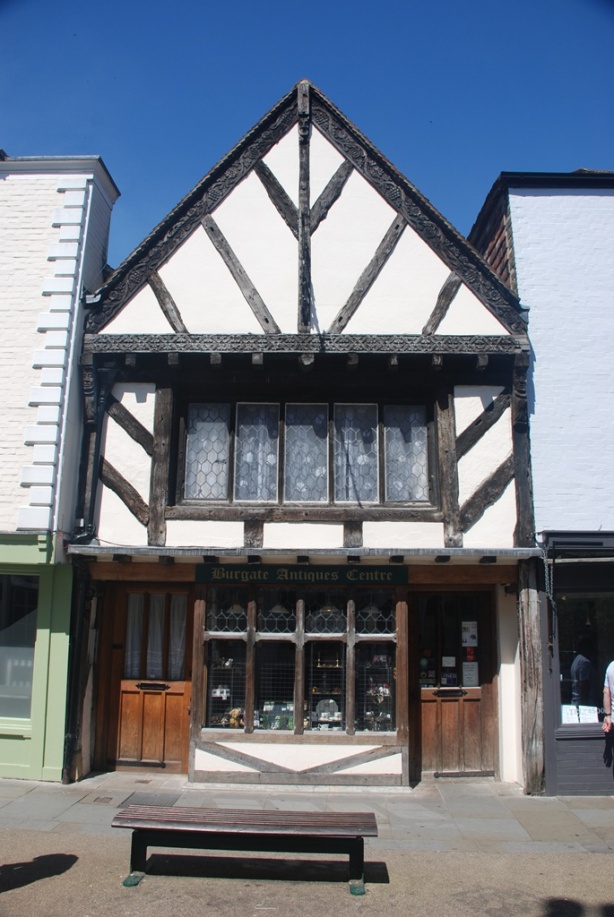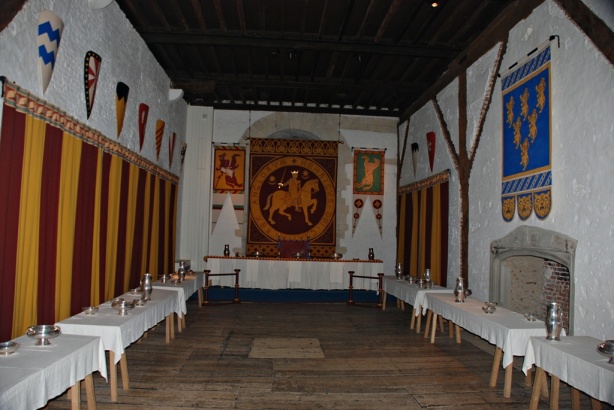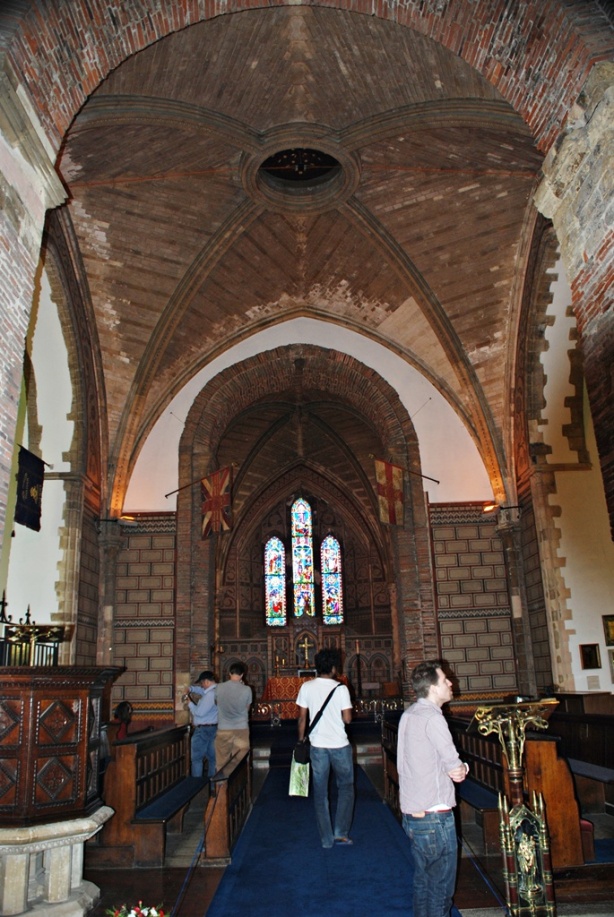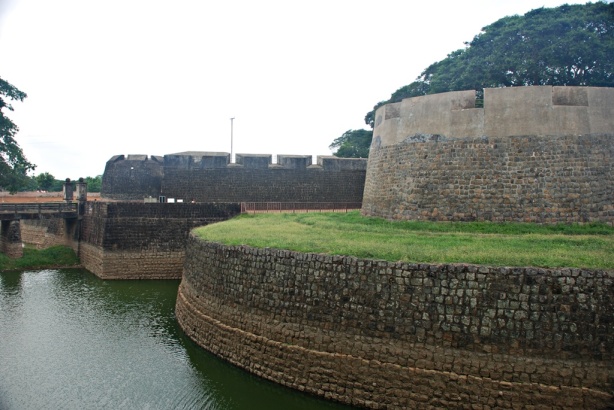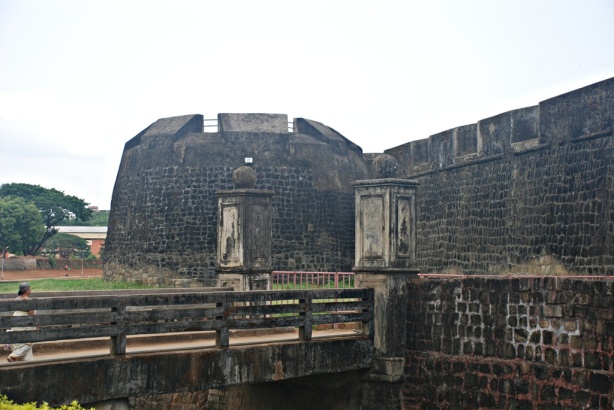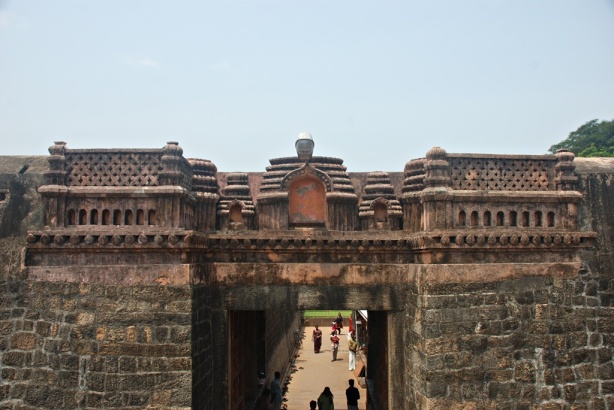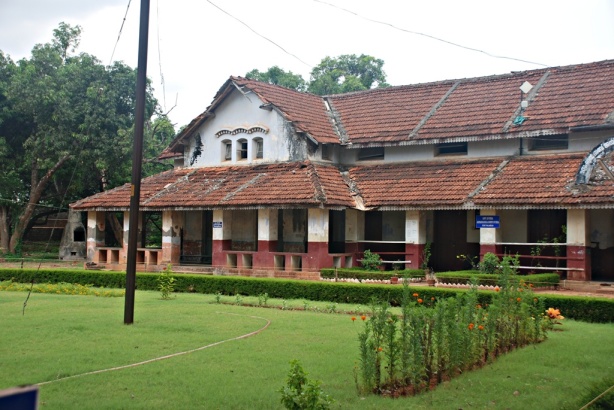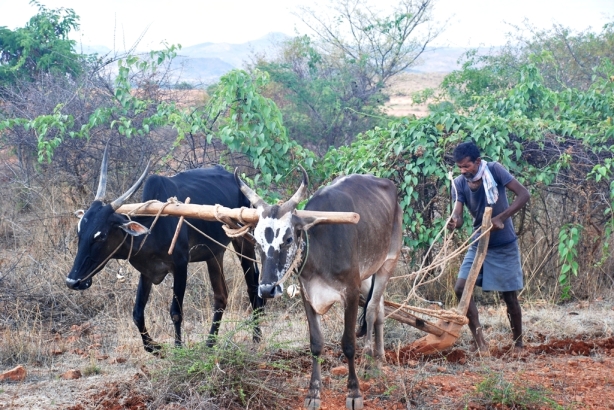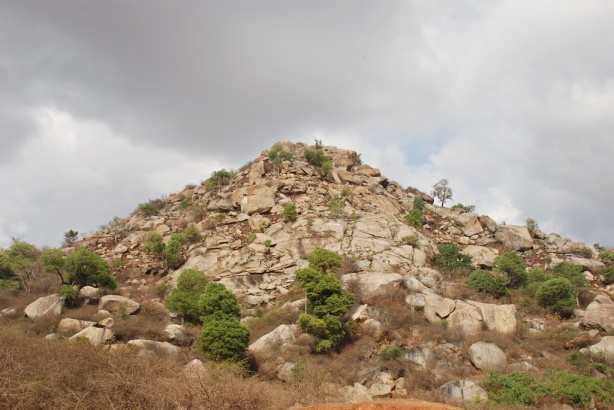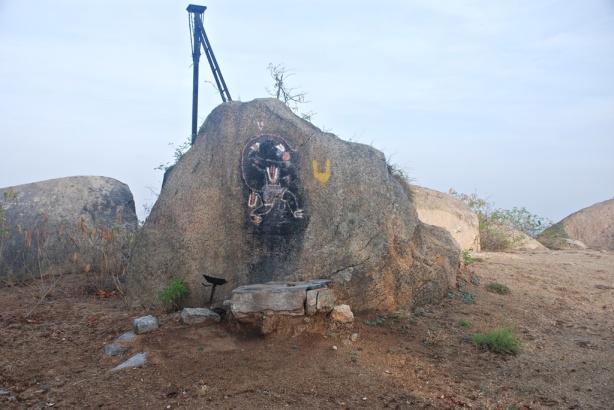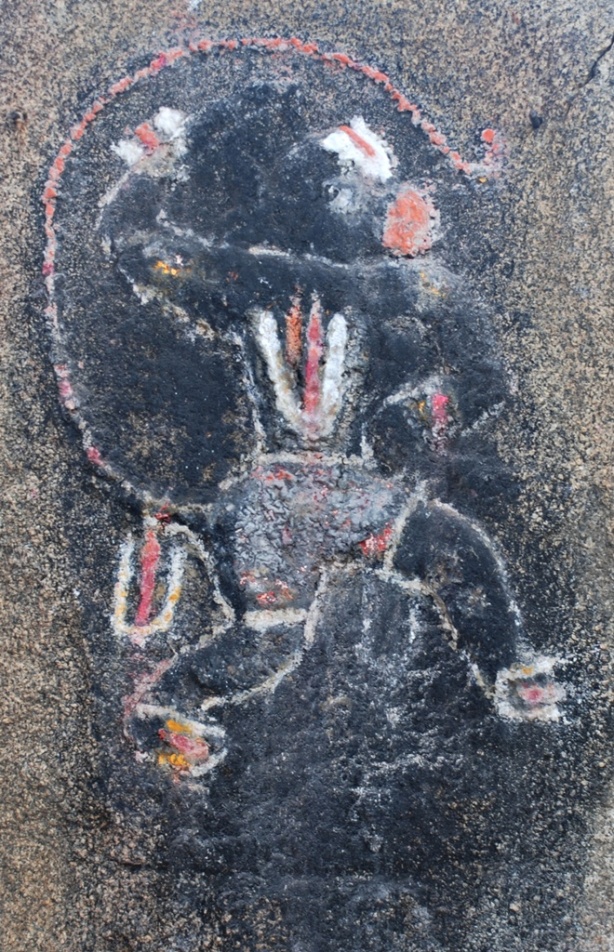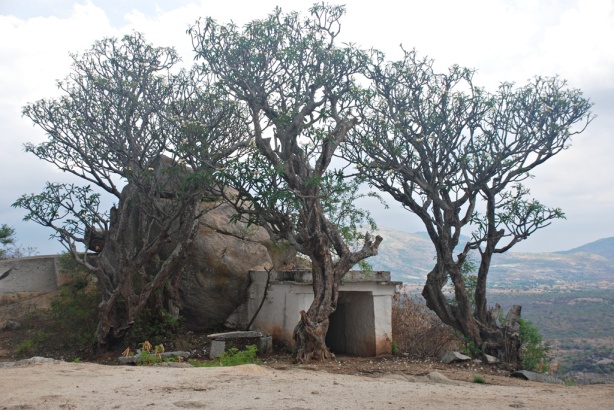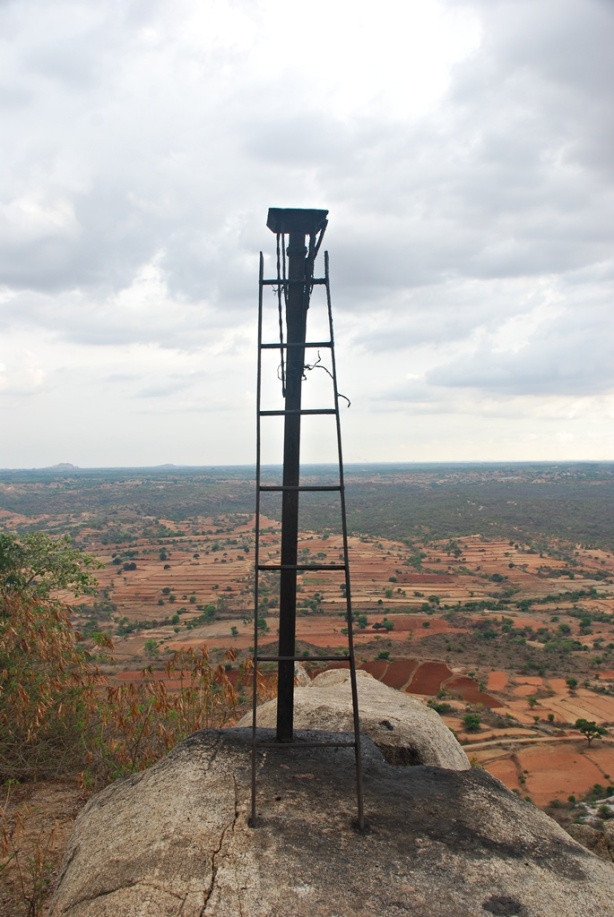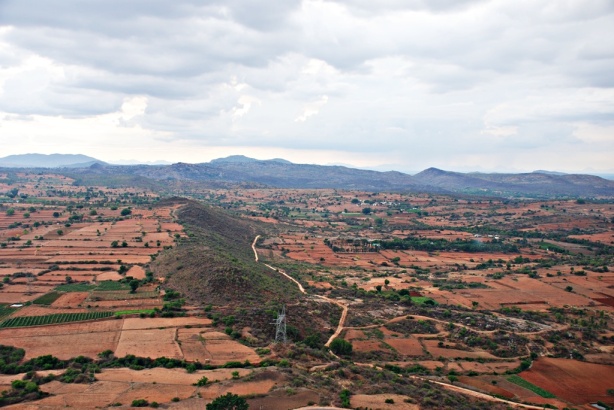27 May 2012
The sun was shining nice and bright as we set off for Dover. As I was already familiar with the GPS from the day before, we got on to the motorway without much incident. The scenes along the road were quite pleasing with nice pastures and farms. A bit into the journey, we saw the signboard to Canterbury and decided to stop there on the way. Canterbury is very famous for its cathedral and held an intrigue because of Canterbury Tales, even if I have not read it. Unfortunately, when we arrived at the Cathedral, it turned out that access to most parts of the Cathedral was closed due to some service going on and would open only after lunch. However, that would have interfered with our Dover plans and so we decided to give that a miss and I could just a couple of shots from the outside.
We walked around the town and it was obvious that most of the shops catered to tourist trade. However, the walk itself was interesting as there were many nice looking old houses in the town.
There was one particular house that was tilted to one side and my friends who are experts in architecture told me that this would have happened with age and it seems this happens with many old houses. If I were not with them, I would have thought that the house was constructed so!
After a refreshing cup of coffee, we were soon hurtling towards Dover. Dover is on the seaside and I had read about the white cliffs of Dover when I was young. In one of the books we had on the Second World War, I had also read of the evacuation of Dunkirk and the role Dover played in that. Hence, I was very eager to get to the castle.
The castle was built between 1179 and 1189 by one of the most powerful monarchs in Europe at that time, Henry II. The castle has since expanded and covers a large area now. The castle itself stands on an old Roman location where they built a lighthouse in the first century and it can be seen even today. Dover itself was seen as the “key to England” and withstood many attacks from the Romans, Normans, French and finally the Germans. The French coast is just 60 kilometres away, across the channel, and is visible on a clear day from the castle. It seems that all it took for a shell that was fired from Calais in the French coast to reach Dover was 70 seconds!
The castle itself is preserved pretty well and the building called the Great Tower forms the core of the castle – it has multiple levels with a hall for gatherings, living area of the King, a small chapel etc. The rooms are very colourfully decorated and I am not sure whether this is a modification of the modern times or whether this was so in the early days. Generally, I have seen that Europe is rather drab in its colours and lack the vibrancy that we see in India. There were a couple of actors dressed up as the King and the Queen, conducting a mock court for the tourists and I thought that was rather tacky.
In one of the rooms, I saw a coat of mail, shield and a sword. All this was so very heavy that I was quite surprised at the strength of the men that would have worn those. I lifted up one arm of the coat of mail and that itself was too heavy for me. Someone said that the knights had to be lifted on to the top of their horses after they had worn all this armour, as it was impossible for them to get up there by themselves!
Right outside the main castle is the old Roman lighthouse and a small church alongside it. It is an old church that has served the military for many years. The interiors of the church were quite sparse and there were many flags inside.
Given the strategic significance of Dover, it was but natural that it became an important military location. In 1940, when France fell, about 400,000 Allied forces got stranded at Dunkirk in France; they had the Germans behind them and the English Channel ahead of them. Speaking at the House of Commons, Winston Churchill said that the “whole root and core and brain of the British Army” was stuck at Dunkirk and they faced death or capture by the Germans. An evacuation was ordered and it started on May 27, 1940 and ended early in the morning on June 4, with the rescue of 338,226 soldiers. While it was an evacuation and so a retreat, Dunkirk was still regarded as a victory as the British Army would have been crushed had they failed to rescue those troops. Many German commanders considered that Germany’s biggest mistake in the Western Front was its’ inability to stop the Dunkirk evacuation. It was on June 4th, after the evacuation, that Churchill made his famous “We shall fight on the beaches” speech.
Vice Admiral Bertram Ramsay lead the whole exercise from the dynamo room (hence the operation was called Operation Dynamo) in the naval headquarters, located in the tunnels under the Dover Castle. It was a large scale logistics operation conducted under extremely dangerous conditions. The whole nation was focused on Dunkirk and many civilian ships and even small fishing boats (it seems the smallest one was but 18 feet long) took part in the exercise and that was why it was successful.
The tunnel system under the castle is very extensive and Admiral Ramsay had his headquarters there. We took a conducted tour through the tunnels and saw office rooms, living quarters, telephone equipment room, repeater station etc. It must have been quite an effort to spend days in there with a war going on. Unfortunately, they do not allow any photography in the tunnels as the fire sensors are supposed to be quite sensitive and might give off alarms when the camera flashes go off. As we walked through those tunnels, exactly 72 years after the day the evacuation started, I could not but feel the tension and the pressure that must have gripped the people that lived there at that time. War causes so much suffering and sorrow – yet, we are forever in wars!
The view of the sea from the battlements was quite nice and we could indeed, see France in the distance. Dover castle is quite different from the many other castles I have seen as it looks very functional; probably because it was used even as close as fifty years back.
Since we were standing on the cliffs themselves, we could not see much of the white cliffs except what we could see by looking up. These cliffs are largely of chalk. During the cold war period, the British Government equipped the tunnels to be a base and retreat for the leadership, in case of a nuclear attack. However, it was found later that radiation would have seeped in through the chalk cliffs and hence the location was abandoned.
